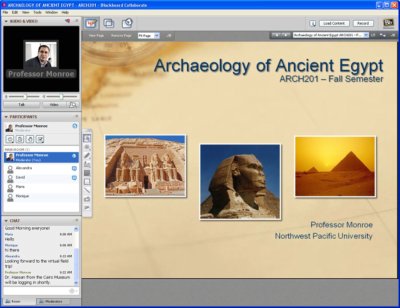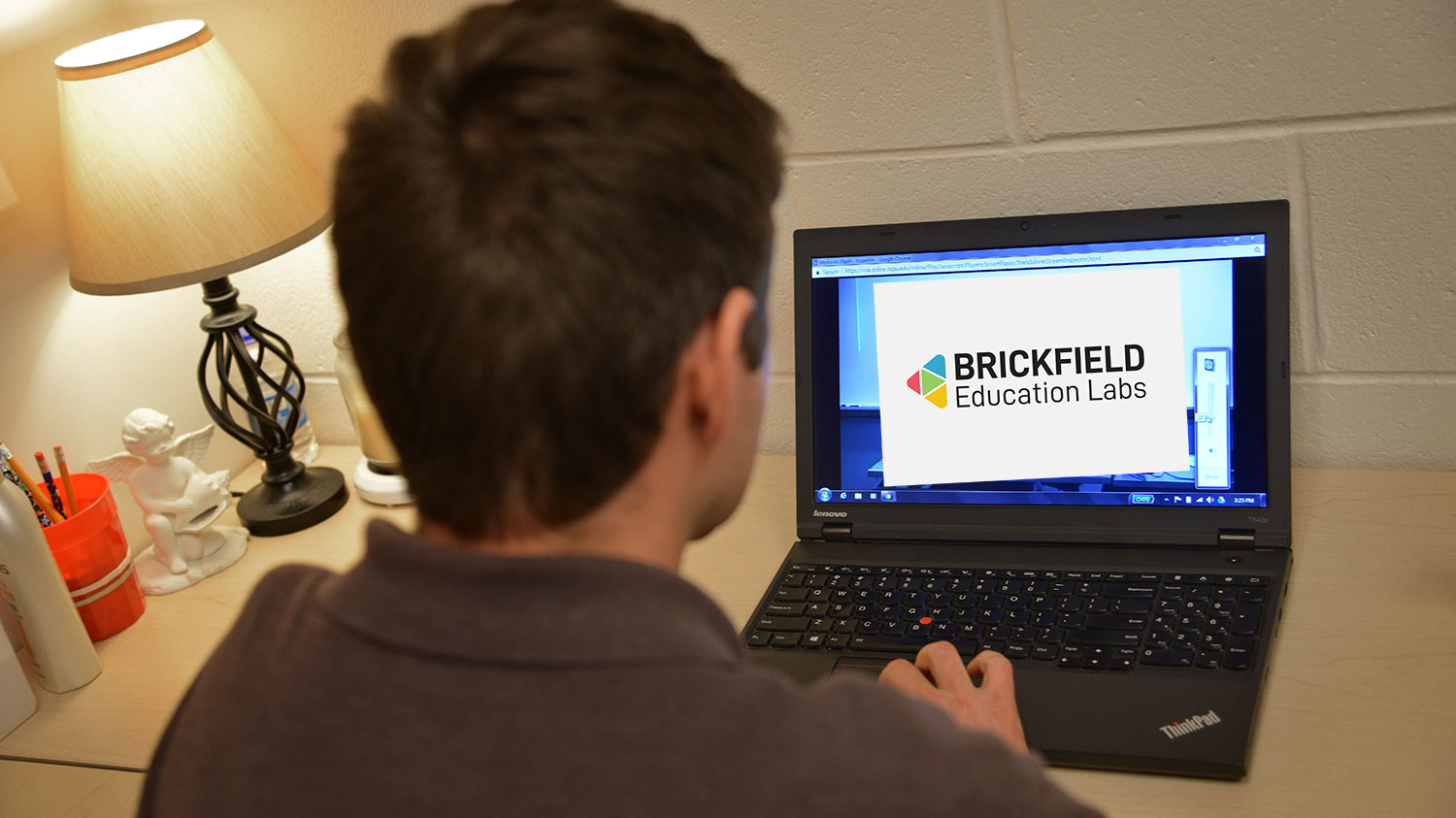Blackboard Collaborate Connections Summit 2011(Archive)
 From July 11th to the 13th, I attended and presented at the Blackboard Collaborate Community Summit. Blackboard Collaborate is a company formed from the merger of Elluminate and Wimba, and is under the Blackboard umbrella. The new product formed from this merger,Blackboard Collaborate 11, was released in July.
From July 11th to the 13th, I attended and presented at the Blackboard Collaborate Community Summit. Blackboard Collaborate is a company formed from the merger of Elluminate and Wimba, and is under the Blackboard umbrella. The new product formed from this merger,Blackboard Collaborate 11, was released in July.
I’ll start off with what you probably care about most — what’s the new product like?
BLACKBOARD COLLABORATE 11
Blackboard Collaborate started this project off on the right foot by continuously soliciting customer input throughout the product creation process via their Product Advisory Council (PAC), of which I’m a member. The PAC even had a pre-conference face-to-face get-together where Blackboard Collaborate executives asked us for our opinions on what was good and bad about the current PAC feedback process, and what we wanted to see in future releases.
Before I give you the details, let me quickly state that NC State University may or may not adopt this new product. The university will be evaluating our choice of synchronous learning management systems (SLMs) soon because our license with Elluminate expires in 2012 and Elluminate has an end-of-life date of December 2012. But the new system is pretty cool, so here’s a quick rundown of the new features:

- New user interface — the product has a facelift and no longer feels like a flash from the past. Buttons have been streamlined so it’s much easier to load content to the whiteboard, start a web tour, and all that other great stuff.
- The new system is based on the Elluminate platform, so Elluminate users won’t lose any of the features they love, but should find the interface easier to use (once they get used to it!).
- You can also drag and drop almost anything – even drag a new slide or image from your computer directly into your Blackboard Collaborate slide show.
- Pop-out screens are a thing of the past–unless you liked them, in which case you can modify your screen easily using drag and drop functionality. But whiteboard, app sharing, and web tours are now all locked into the main screen instead of floating on top, and videos sit in the upper left corner. You can also set the video focus to follow whoever is using the audio.
- Accessibility has vastly improved in this release. In designing the new product, Blackboard Collaborate continued to call upon their Accessibility Taskforce, another customer-based group, which includes three NC State University representatives – me; Lisa Fiedor, Web Accessibility, Usability, and Design Specialist for DELTA; and Greg Kraus, OIT Accessibility Coordinator. They also hired an outside firm, SSB Bart, to help design accessibility solutions. The result is a product that has even better accessibility features than previous Elluminate releases, and those members of the Accessibility Taskforce who have impairments have been pleased with the results.
BLACKBOARD COLLABORATE KEYNOTE
The opening keynote for the convention was given by the President of Blackboard Collaborate, Maurice Heiblum. Maurice walked us through the roadmap for the merger, what their goals were from the start of the merger, and how that’s led to where they are now. He gave an overview of the Blackboard Collaborate system, which includes not only the web conferencing system, but also the other products from the Wimba platform, instant messaging and voice tools. Overall, it was a love fest for Blackboard Collaborate, but it was reassuring that they’re trying to keep the cultures of Elluminate and Wimba alive even under Blackboard’s umbrella. And the people that we work with at Elluminate are still there.
Maurice also assured us that they are committed to a platform agnostic approach and will continue to work on integrating the Blackboard Collaborate system with all learning management systems (LMS).
CUSTOMER-LED SESSIONS
The first customer-led session I attended was presented by Sandra Mancuso, Director of Teaching and Learning Online at the University of the Cumberlands, and was titled “Faculty Training, Evaluation, and Ongoing Development.” Sandra presented on their instructional technology training program, which is mandated for all of their faculty who will be teaching online. Their program is based on the Concerns Based Adoption Model (CBAM) by Loucks and Hall. Their training program is six to twelve hours of training spread out over a three week period. During this time, faculty learn how to use the University’s LMS and Elluminate, as well as best practices for teaching online. Many of their strategies are similar to what we deliver during DELTA’s annual Teaching with Technology Summer Institute, such as providing a course welcome, creating a communication policy, and using good course design techniques.
Next I attended a session from Drexel University, who were inducted into the Blackboard Collaborate Hall of Fame during the conference for exemplary innovation and creativity in their use of the Blackboard Collaborate platform (including Elluminate and Wimba tools). Drexel presented on their use of Wimba Classroom, which is similar to Elluminate. Again, many uses were similar to what faculty and staff are doing here at NC State, and they have several creative uses of their conferencing system. They host virtual wine and cheese parties for their graduate students, and their virtual orientation is a tea party. When they mail information packets to the students, they include tea bags!
I attended two panels on student engagement, and was a presenter during the first one. There was a wide variety of topics covered in these sessions, including both synchronous and asynchronous methods. Some of my favorite takeaways from these sessions were:
- Sending each student into individual breakout rooms at the end of a synchronous class to do a short assessment, such as rewriting a paragraph or using geometry concepts to create a map.
- Creating semester-long groups with volunteer group leaders who received special recognition for their efforts.
- Assigning each student a topic to teach to the other students. Students would then lead a discussion with their fellow students on the topic using forums.
To learn about what I presented, consider registering for Elluminate Moderator Training II: Tips and Techniques.
If you are interested in learning more about the Blackboard Collaborate Connections Summit, please feel free to contact me at beth_shepherd@ncsu.edu.
- Categories:


